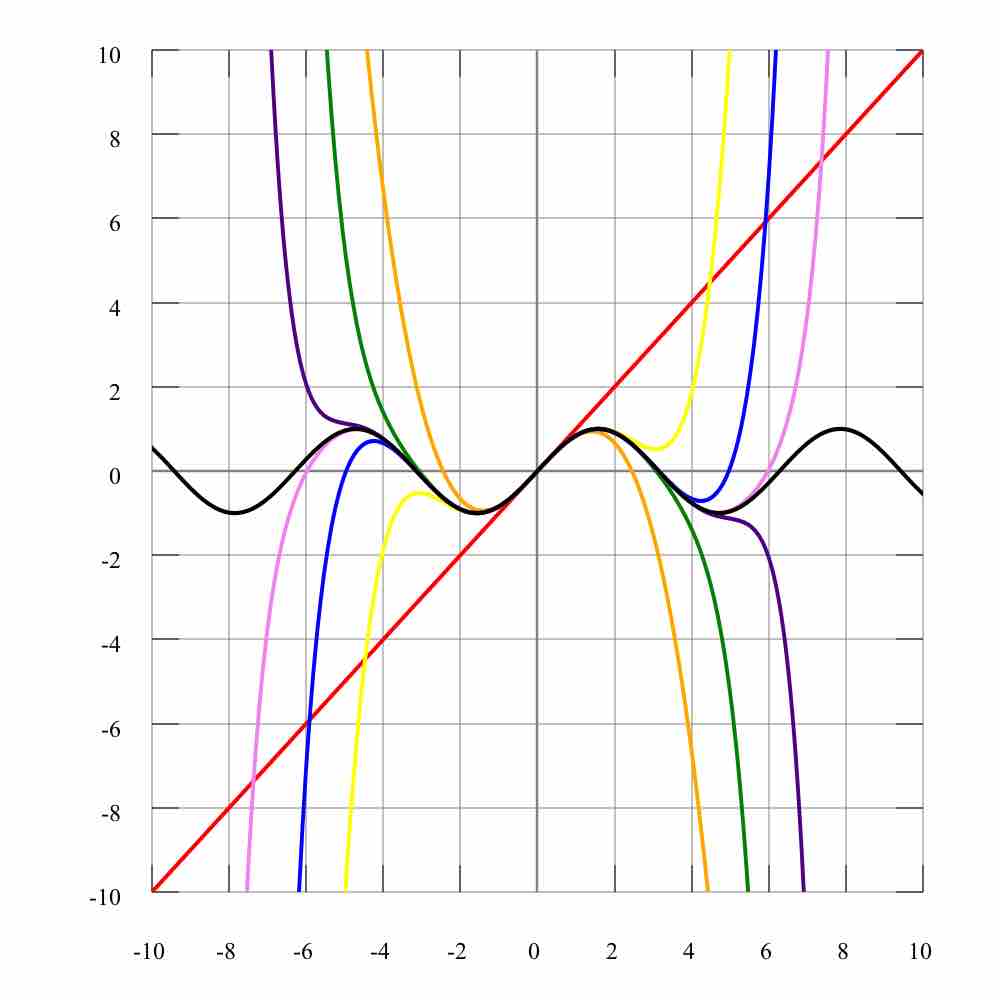A power function is a function of the form
The Taylor series of a real or complex-valued function
where
Therefore, an arbitrary function that is infinitely differentiable is expressed as an infinite sum of power functions (

$\sin x$ in Taylor Approximations
Figure shows
Examples
Functions of the form